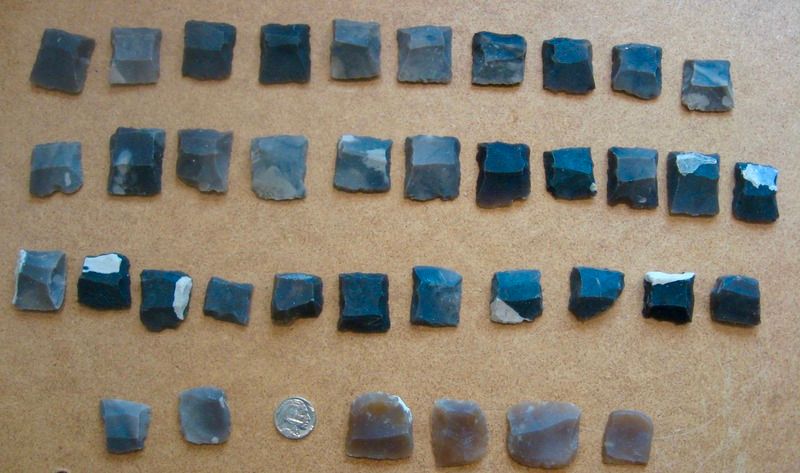Just ordered a pound of mixed English and French musket flints from IMA. Will report on what I receive. They estimate 30 to 40 flints per pound for about $30, and this will give me a chance to compare the performance of grey English flints and French amber flints.
You are using an out of date browser. It may not display this or other websites correctly.
You should upgrade or use an alternative browser.
You should upgrade or use an alternative browser.
Original musket flints
- Thread starter BillinOregon
- Start date

Help Support Muzzleloading Forum:
This site may earn a commission from merchant affiliate
links, including eBay, Amazon, and others.
I swear I saw a discussion of these very same flints on here just a few weeks ago but I can't find it now. It may have been a part of a thread drift. :idunno: I do remember part of the discussion was about the percentage of flints that were actually usable out of the total.
:metoo: Seemed that the usable was LOW but still cheaper than buying commercially :idunno:
- Joined
- Jan 3, 2004
- Messages
- 14,767
- Reaction score
- 320
This reminds me of experience and discussion on a couple of early Russian American archaeology digs I was part of. In and around the trading post we'd find lots of flints. The archeo's were calling them "lost" flints. But from looking them over and comparing with what I knew to be good, serviceable flints, I knew they weren't lost at all. They were pure junk and someone back in the day had tossed them! :grin:
- Joined
- Jun 4, 2014
- Messages
- 7,329
- Reaction score
- 10,655
http://www.muzzleloadingforum.com/fusionbb/showtopic.php?tid/298748/post/1543727/hl//fromsearch/1/
I got some a few weeks ago, About 60 in all in the package, most musket sized, some smaller about half and half amber and black.
Most a little crude compared to those currently sold by TOW, but what can you expect based on their age.
I got some a few weeks ago, About 60 in all in the package, most musket sized, some smaller about half and half amber and black.
Most a little crude compared to those currently sold by TOW, but what can you expect based on their age.
Last edited by a moderator:
- Joined
- Jul 31, 2006
- Messages
- 3,953
- Reaction score
- 1,086
BrownBear said:This reminds me of experience and discussion on a couple of early Russian American archaeology digs I was part of. In and around the trading post we'd find lots of flints. The archeo's were calling them "lost" flints. But from looking them over and comparing with what I knew to be good, serviceable flints, I knew they weren't lost at all. They were pure junk and someone back in the day had tossed them! :grin:
Were the Russians using gun spalls (flints napped in the older English style which are pretty crude looking) or gun flints (napped in the French style and pretty much the universal 'flints' we see today such as Tom Fuller flints) ?
- Joined
- Jan 3, 2004
- Messages
- 14,767
- Reaction score
- 320
Saw some of each. Older were spawls, newer were napped. I'm guessing it had a lot to do with the French and experience leading up to the Crimean War.
I've knapped some crude "arraheads" out of our native Oregon obsidian, so maybe I will be able to do a bit of touch up and save a few.
International Military AntiquesFisher71 said:What does IMA stand for?
How do you know they are old. Outside of the site rocks are hard to date. Depending on the soil there may be some mineralsation or fungal growth, but I have found lots of arrowheads that looked brand new. :idunno:
Similar threads
- Locked
- Replies
- 12
- Views
- 1K
- Replies
- 105
- Views
- 8K




